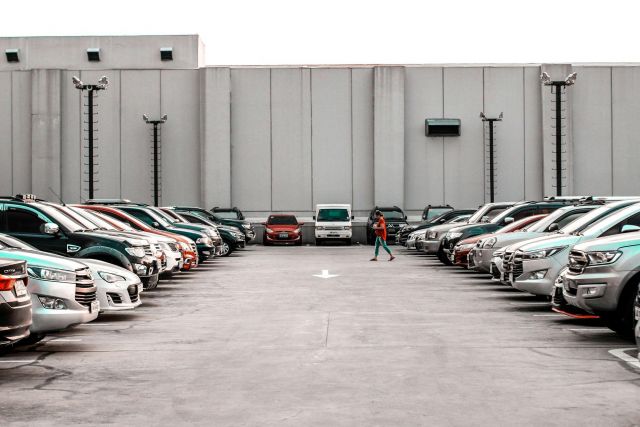
BYD brings affordable PHEV SUV to the market
BYD has added another model to its line-up in South Africa. This time it is the Sealion 5, which slots in below the larger Sealine 6, which is also available locally.
- Product News
- 15 December 2025
Almost every dealership has them – listings that sit quietly in the background, gathering cobwebs. Despite looking good on paper, some used vehicles attract minimal buyer attention and quietly chip away potential revenue. But what if those slow movers weren’t dead ends, but missed opportunities waiting for the right tweak?

Data from the AutoTrader 2024 Annual Car Industry Report shows that the average used car sells within just 35 days in South Africa. That figure reflects how quickly 80% of cars are sold. When looking at all vehicles, the average increases to around 70 days. Either way, listings that linger for hundreds of days stand out by comparison and signal an urgent need for action.
Backed by AutoTrader profitability metrics for dealers, this article explores proven strategies to help dealers identify and turn around underperforming stock, including:
For relevance, we’ve capped the data at vehicles no older than 10 years (2015 and newer and priced up to R1 million, to avoid skewing the results with expensive cars that typically move slower by nature.
“Every unsold car tells you something — it’s not just a product that’s stuck, it’s insight that’s waiting to be acted on,” comments George Mienie, CEO of AutoTrader. “Dealers who know how to read that signal and respond with precision, whether it’s pricing, positioning or targeting, don’t just move stock, they sharpen their edge in a competitive market.”
Identify stock at risk before it stalls:
Listings with above-average time-on-site and low enquiry rates are red flags. For example, the Maserati Quattroporte took an average of 459 days to sell. While it may be a desirable motorcar, the average buyer tends to avoid it owing to its historically steep depreciation and high repair bills. With an average price of R534 993 and an average registration age of nine years, buyers are likely to avoid this vehicle. Dealers determined to sell cars like the Quattroporte need to utilise data to compare the retail price to the market average, gauge how desirable it is based on supply and demand data, track how fast these kinds of vehicles are selling and identify if there is a need for discounts and/or promotions. This will allow you to benchmark your stock against similar cars in the market.
Reprice smarter using live market data:
Price remains the biggest filter in online used vehicle searches. A car that’s even slightly off the pace in its segment can sit unsold for months. The Proton X70, for example, averaged a high of 354 days to sell despite being only three years old, suggesting a pricing mismatch compared to demand. With an average selling price of R335 379 for a three-year-old model, that’s not an overly bad price. However, South African mainstream consumers aren’t all too familiar with the Proton badge, which again makes this car a somewhat niche purchase.
AutoTrader’s Price Ratings tool equips dealers with data-driven insights to position their vehicles confidently in the market. The tool classifies pricing as Low, Great, Fair or High Price, helping dealers understand where their vehicles sit relative to similar stock.
Target the right buyer with precision:
Not all vehicles appeal to the same shopper, especially niche luxury and sports cars. If a listing remains stagnant despite fair pricing and good photography, it may be because the right people are not seeing it.
Take the Porsche 718 Cayman. With an average price tag of R979 900 and an average registration age of seven years, it averaged 242 days to sell. High-end buyers exist—but they’re selective and need to be targeted with care.
Dealers can utilise targeted digital tools (such as featured and premium listings) to promote their stock to specific buyer segments. For instance, electric vehicles can be surfaced to users who’ve previously viewed EV or hybrid models.
On the AutoTrader platform, dealers can utilise Featured Listings, which appear at the top of relevant search results, or opt for Premium Listings that include enhanced content, such as additional images and detailed information to make their stock stand out and attract more engaged buyers.
Closing the loop:
Even a quick scan of current AutoTrader data shows that days-to-sell is rarely just about price. Consider the Subaru Impreza (439 days, R231 163, 7 years old) — a practical, capable vehicle, yet slow to move.
It could be a mismatch in brand positioning or a lack of familiarity with online presentation. Subaru has never been a major brand in South Africa, limiting its appeal. A risk-averse buyer is more likely to purchase something more popular.
“Stock velocity is the heartbeat of a dealership’s success. The faster a vehicle sells at maximum profit, the less it costs to hold and the sooner it contributes to profitability,” George says.

Geely Auto South Africa is preparing to take its rightful place in the local automotive market, with 33 dealerships already operating within a month after the Chinese auto giant’s return to the country.

Zweli Sibiya, Dealer Principal of Hyundai Benoni, is a man who rose from humble beginnings to lead one of the top-performing dealerships.

SCW Group’s multi-franchise set-up in Milnerton in the Western Cape now also boasts a brand-new Mahindra dealership.